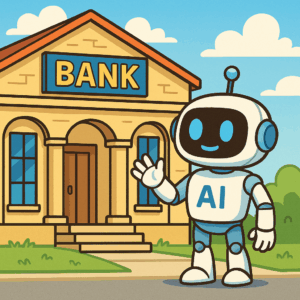By: Pamela DeLoatch, re-posted from HR Dive
What makes work meaningful? Even as companies determine how to deliver positive employee experiences, organizations now realize that flexible work options, wellbeing benefits, and inclusion activities are not enough to help employees feel that the job they do matters.
Numerous studies show that employees value meaning and fulfillment in their work — to the point that they’d give up some of their wages to work a job that matters to them. A Harvard Business Review survey found 9 in 10 people would be willing to earn less for a job that was more fulfilling. That same survey found employees would give up 23% of their entire future lifetime earnings to have a job that was always meaningful.
The recipe for meaning
What are the factors of a meaningful job? That answer may be different for each employee, Shannon Schuyler, chief purpose and inclusion officer, PwC told HR Dive. For some, it’s influencing a group or community, growing personally or building deeper relationships, she said.
Although the building blocks of meaningful work may vary, employees of all ages have that same desire, Lisa Sterling, Ceridian chief people and culture officer, told HR Dive. “What we really started to learn is these individuals, regardless of the year they were born in, want the same thing that everybody that came before them wants, which is to come to work every day, leverage their strengths, do what they’re passionate about, feel like they’re committed to the greater good of the organization [and] at the same time, be able to have the flexibility, to have fluidity between their work and personal lives and to feel included,” she said.
Joanna Parke, chief talent officer at ThoughtWorks, said that providing meaningful work doesn’t necessarily mean making employees happy but creating an environment in which peoples’ work is fulfilling. Citing Daniel Pink’s book “Drive,” Parke told HR Dive that people need three concepts to be motivated and driven: autonomy, mastery, and purpose. Purpose is the obvious one in terms of the bigger picture of what an employee does, Parke said. “But the other two to me speak more to the fact that people inherently want to do a good job. They want to be good at something, and they want to have the ability, and the agency, and the freedom to kind of solve problems and get the satisfaction that comes from solving those problems.”
As employees benefit when they feel connected to their work, employers gain too. A Harvard Business Review study found that employees who have meaningful jobs are 69% less likely to quit in the next six months, will stay in their positions seven months longer than other employees, take two fewer days of paid leave per year, work an additional hour per week and have greater job satisfaction, which correlates with higher productivity.
Calling out meaning daily
For some jobs, it’s easy to see how a job can provide meaning. A surgeon or EMT can save lives. A fundraiser for a nonprofit organization can impact social problems. But for many jobs, it can be challenging to see how everyday responsibilities fit in the big picture.
Companies can help employees with this, but the first step is for the organization to reflect on what it wants to be — in other words, what is its “why,” Schuyler said. Once that is determined, the company should ask if it is living up to its purpose. We can’t ask our people to align to our purpose unless we actually reflect on our business, she said.
Communicating the impact of work is critical, Sterling said. “It’s about transparency and helping every employee, even your lowest-paid people in the organization, understand where the organization is going, what it means.”
At Ceridian, hundreds of customer service representatives talk with customers, handling tactical questions on how to use the payroll platform, Sterling said. “Some people they may just think, ‘Hey, I’m just another call center rep.’ The reality is they’re not; they are a fundamental component to our overall retention strategy of our customers,” she said.
It’s a matter of breaking down the work and focusing on outcomes or the value it creates, and not just on the activities, Parke added. For example, a financial services company that wants to support women in investing may look at achieving that through more education and user-friendly tools. Conveying that goal to the software developer who is building widgets on a webpage can make the project have more purpose.
Starter step: Aligning work and purpose
Unfortunately, leaders don’t always convey those outcomes regularly, Sterling said, but those who want to change can start by identifying some strategic points to make a difference in the employee journey.
For example, when hiring a customer service rep, employers often talk about having customer service skills, being organized and detail-oriented, versus how the job impacts the company, culture, and customers, Sterling said. It’s not necessarily changing the position itself, but changing the description of the role and knowing what skills and behaviors those employees need to have. The shift requires putting the expectations on the outputs that are impactful, not the number of calls that you resolve, she said.
Performance evaluations, rewards and recognitions are also areas to examine to see if systems and practices support purpose, Parke said. She said ThoughtWorks values capabilities like collaboration, communication and teamwork, and the company is careful not to reinforce a hero culture where one person takes all the work and credit.
HR’s involvement: Timely and key
The evolution in the understanding of meaning at work presents an opportunity for HR leaders, Schuyler said. “When you look at human capital leaders and CHROs, this gets them into the C-suite in the boardroom and in a different way. You’re not only talking about your people, which is an invaluable asset, but you’re talking about the purpose of the organization, and that spreads through everything that you do,” including investments, policy and government affairs, procurement and revenue streams, she said.
For HR leaders who aren’t yet in the room where those discussions happen, there are still opportunities to drive change, Sterling said. “Don’t do nothing because you can’t do everything. Start small. Plant the seeds. Start looking at the little things that you can do to speak differently. Write the job profiles instead of job descriptions that are more behavioral and connected to the greater good of the organization version versus the traditional job description.”
HR can drive that conversation, Schuyler added. “If we can empower our people to understand what our organizational purpose is and to be able to allow them to get the best of themselves by knowing their purpose, we can unlock all these different channels and have fundamentally different discussions for that organization,” she said.




